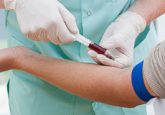Marking World Diabetes Day with treatment progress in 2025

In celebration of World Diabetes Day (14 November 2025), we’ve collected our diabetes news coverage from 2025, plus some additional stories, highlighting this year’s advancements. Read about what’s been going on in the field of diabetes this year.
21 January – The US FDA endorsed a urine biomarker panel for monitoring drug-related kidney injury risks
A new urine biomarker panel was designed to provide an indicator of kidney response to drug-induced injury and was endorsed by the US FDA. Designed for use in individuals with normal kidney function and to complement standard kidney safety laboratory tests, the panel marked a significant advancement in safeguarding the health of participants in early-phase drug development trials, where safety risks can be unpredictable.
16 May – Caffeine metabolites in urine were shown to be correlated with diabetic retinopathy risk in men
A cross-sectional study examined the association between urinary caffeine, caffeine metabolites and self-reported diabetic retinopathy (DR) risk and reported that caffeine urinary metabolites could act as noninvasive biomarkers for DR in men. DR is a microvascular diabetes complication and is one of the leading causes of visual impairment and blindness in adults over 50.
20 June – Vertex presented positive data for zimislecel in type 1 diabetes at the American Diabetes Association 85th Scientific Sessions
Phase I/II data from a clinical trial examining zimislecel, an investigational stem cell-derived cell therapy, in people with type 1 diabetes with impaired hypoglycemic awareness and severe hypoglycemic events. The presented data included 12 patients who received the full dose of zimislecel as a single infusion and were followed for a minimum of a year [1].
30 June – Medical Research Archives published analytical insights into disease mechanisms and biomarker discovery for diabetes
A review published in Medical Research Archives provided an overview of the latest techniques and analytical strategies used in metabolomics research, covering advanced mass spectrometry techniques specifically applied to diabetes mellitus research. This included biomarker identification, metabolic profiling and type 1 and 2 metabolic pathway analysis [2].
17 July – Hidden biomarkers were uncovered for diabetes early warning signs
Scientists from the Indian Institute of Technology (IIT; Mumbai, India) Bombay have unearthed previously hidden blood biomarkers that could help identify early warning signs of diabetes, offering hope for a new wave of diabetes diagnoses in India. Using liquid chromatography–mass spectrometry and gas chromatography–mass spectrometry, the researchers performed metabolite profiling of nearly 300 metabolites at once and identified 26 that differed significantly between healthy and diabetic participants. When comparing participants with diabetic kidney disease to other groups, the team observed a steady increase in seven metabolites, including sugar alcohols such as arabitol and myo-inositol, as well as ribothymidine and a toxin-like compound called 2PY, which accumulates in cases of kidney damage.
 Analysis of semaglutide from human plasma by LC-MS/MS
Analysis of semaglutide from human plasma by LC-MS/MS
Semaglutide, developed as a medication for the treatment of type 2 diabetes, became popular due to its effect on obesity. Analytically, semaglutide is challenging, as its effective plasma concentration is low and needs to be detected against a high background noise level. Download this highly sensitive, no carryover LC-MS/MS method to determine semaglutide in plasma using the Shimadzu Nexera X3 and the LCMS-8060NX.
1 August – Biotech start-up Sava Technologies received $19m in Series A funding for wearable glucose monitors
The firm announced that data from the first 25 patients of an independent clinical trial yielded promising results in accuracy and longevity for their continuous glucose monitors. Sava hopes that this injection of capital investment will allow them to secure regulatory approval and pivot to marketization and mass production of the biodevices.
28 Aug – Frequent DBS microsampling of protein markers showed promise for timely intervention for type 1 diabetes
A team spread across the Karolinska Institutet, KTH Royal Institute of Technology and SciLifeLab (all Stockholm, Sweden) investigated whether frequent blood microsampling in mice post infection with Coxsackievirus, a virus suspected of triggering type 1 diabetes, could reveal these changes at an early, presymptomatic stage. The study investigated whether blood microsampling and affinity-based proteomics could capture changes in the circulating proteome that are induced by a disease trigger and whether this could inform timely, molecularly-informed interventions.
Disclaimer: the opinions expressed are solely those of the author and do not express the views or opinions of Bioanalysis Zone or Taylor & Francis Group.






